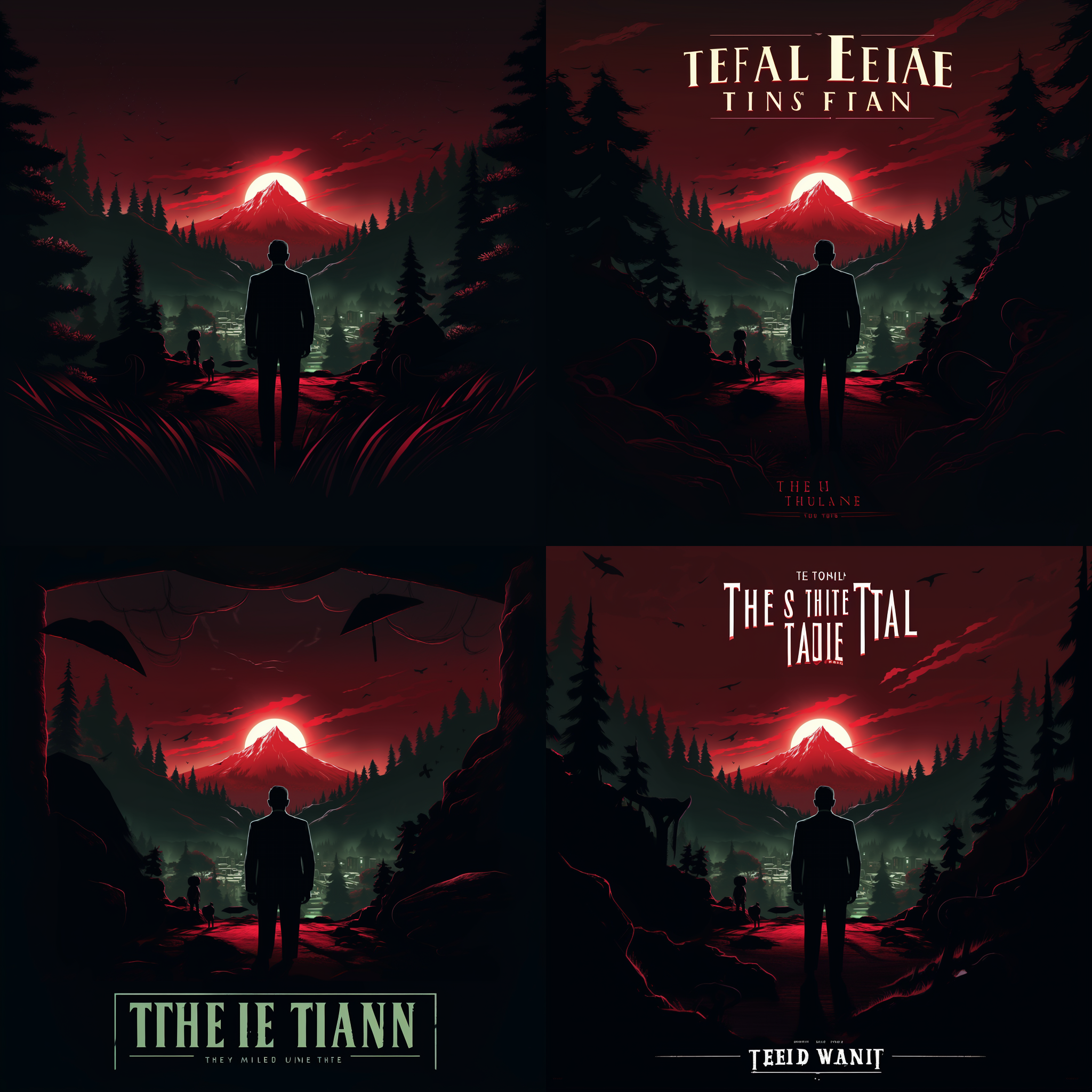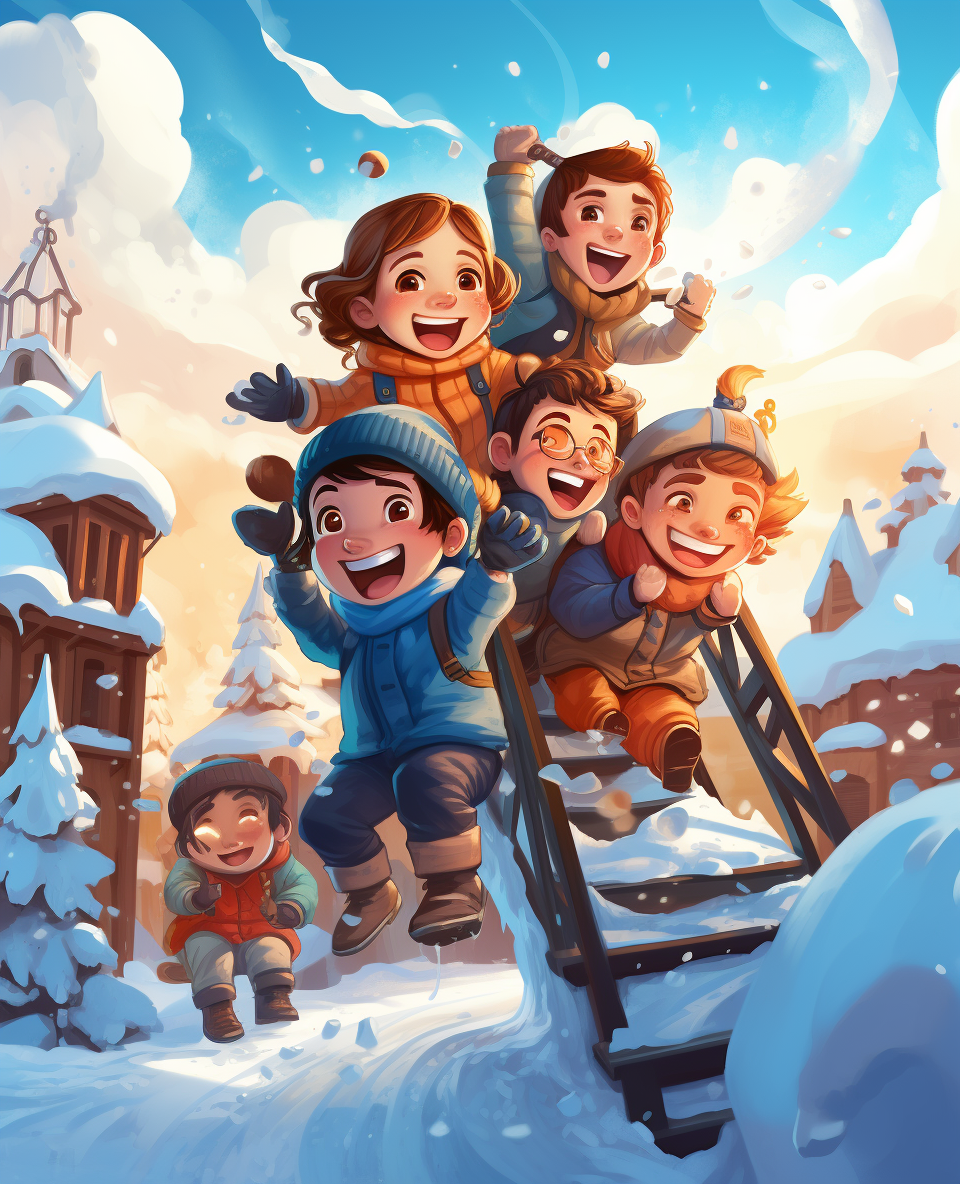Questioning the Use of AI in Game Development
As we move deeper into the age of artificial intelligence, the potential for creativity is beginning to show. Recently our team experimented with Midjourney. It's an AI platform that generates images based on prompts. This text-to-image ignited a discussion about quality, ethics and the role of AI in the game development process.
by Dennis Briddigkeit | August 2, 2023
With Midjourney, we generated game art in two ways. Firstly, we used descriptive prompts related to our existing and made-up games. Secondly, we utilized existing 2D art to allow AI to create descriptive prompts. These prompts were used to create new art. We used Midjourney in the basic subscription model, integrating it in our Discord server.

“Game cover, style of 50’s art, twin peaks, mystery, solving murder, FBI agent, dark silhouette, powerful mountains, big title”
“Thank God, it’s nothing like I imagined it”
This was Marc’s first reaction, our Game and Creative Director, showing relief that we didn’t make him redundant. The best way to describe the quality of the results is: everything. These images are everything. From really good to really bad. It’s probably also the sum of all images that have ever been posted in the world wide web, from aspiring and renowned artists.
The first sign of AI can be seen in the fingers: sometimes there were five fingers without thumbs, other times six fingers (including thumbs), often distorted or malformed. This is understandable, as even human artists find hands challenging to draw. The same goes for chairs: sometimes just 2 or 3 legs, defying gravity like a wicked witch of the west.
But we also got results that were inspiring. Images that showed a scene or a mood that we haven’t thought about and kicking off a thought process that has not been initiated before. Images that somewhat sparked or followed up on a loose idea or made way for a fresh new one.
However and really quickly into the discussion about quality, ethics and if and how we could use it, everyone felt… weird about it. Knowing and working with really good 2D artists for key or concept art, we could feel the slap in their faces.
AI doesn’t look left and right
Unlike (most) artists, AI doesn’t look left and right. It simply takes what is popular and replicates it within the given structure of a prompt. You can clearly tell what input AI uses: popular arts, beautiful white woman. Often manga-like, with overly large eyes and child scheme.

The longer you look, the more weird things you’ll notice.
For instance, when given prompts revolving around “beautiful woman” to create a total of 20 images, 19 women where white, young, caucasian females with long curly hair, often with oversized eyes and every now and then a décolletage. The platform only created one (1) image of a woman of color. A reminder of the AI’s potential bias.
If you look into the public gallery of Midjourney , its often sexualized young women. Prompts like “Daenerys Targaryen in a tight dress” are common. Which results in an image of Emilia Clarke, British actress, in a white, tight and somewhat see-through dress. And these images are now publicly available, for free. Without anyones consent. I’m not naive, fan-art and especially overly sexualized fan-art is neither new nor uncommon. But in this quality, quantity and speed it is.
It feels like a mashup from ArtStation
Midjourney feels like a mashup of the most well-working art of ArtStation. “It doesn’t seem to create as much as it uncovers pre-existing, unfound art” said Daniel, one of our programmers. In this process, countless hours of an artist’s effort are compressed into a new homogenized mash.
Pretty quickly the question came up: “Ok, now what? Could we use it?”. The answer is: yes and no. Yes, because the images don’t have copyright. U.S. authorities ruled that users cannot expect copyright protection for the work generated by AI. So technically it is owned by anybody and thus: nobody. Same applies for Germany . Only a human being can be a originator according to German law.
And no, because Steam - undoubtedly the biggest digital video game distribution service - just made clear, that it won’t allow games with AI-generated content:
“While we strive to ship most titles submitted to us, we cannot ship games for which the developer does not have all of the necessary rights.” - Valve
And it’s highly likely that other distributors will follow Valve’s example. Publishing a game with AI-generated content probably won’t be possible. This situation also introduces the new risk of a “false positive” flag, where AI mistakenly identifies a game as having AI-generated content when it doesn’t. Now the burden of proof lies upon the game developer. Tricky.
Our Conclusion
The overall quality, availability, and speed of AI-generated content are impressive in two significant ways. Firstly, it aids young and upcoming game designers and developers in the process of ideation and conceptualization, helping turn ideas into images. However, it relies on the collective work of countless artists without giving them proper credit or seeking consent. It’s a biased mix of images that reinforces harmful stereotypes, including racist ones. A stereotype that the game industry already struggles with.
Ultimately, major game distributors will likely have to address the issue of unauthorized image usage and prevent games that use such content from being published and monetized.
But in the event of a hostile takeover: Praise the AI Overlord.
Disclaimer: This copy has been checked and corrected for spelling and grammar by ChatGPT for better readability. Guilty as charged.


